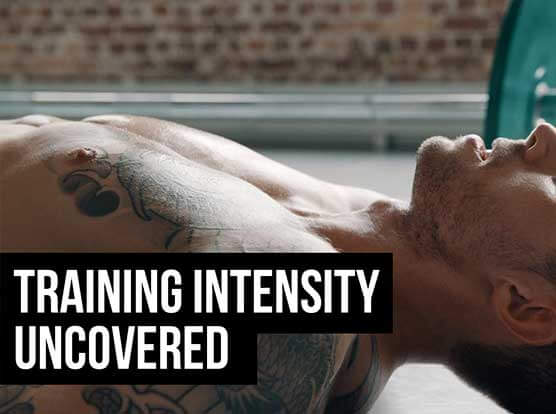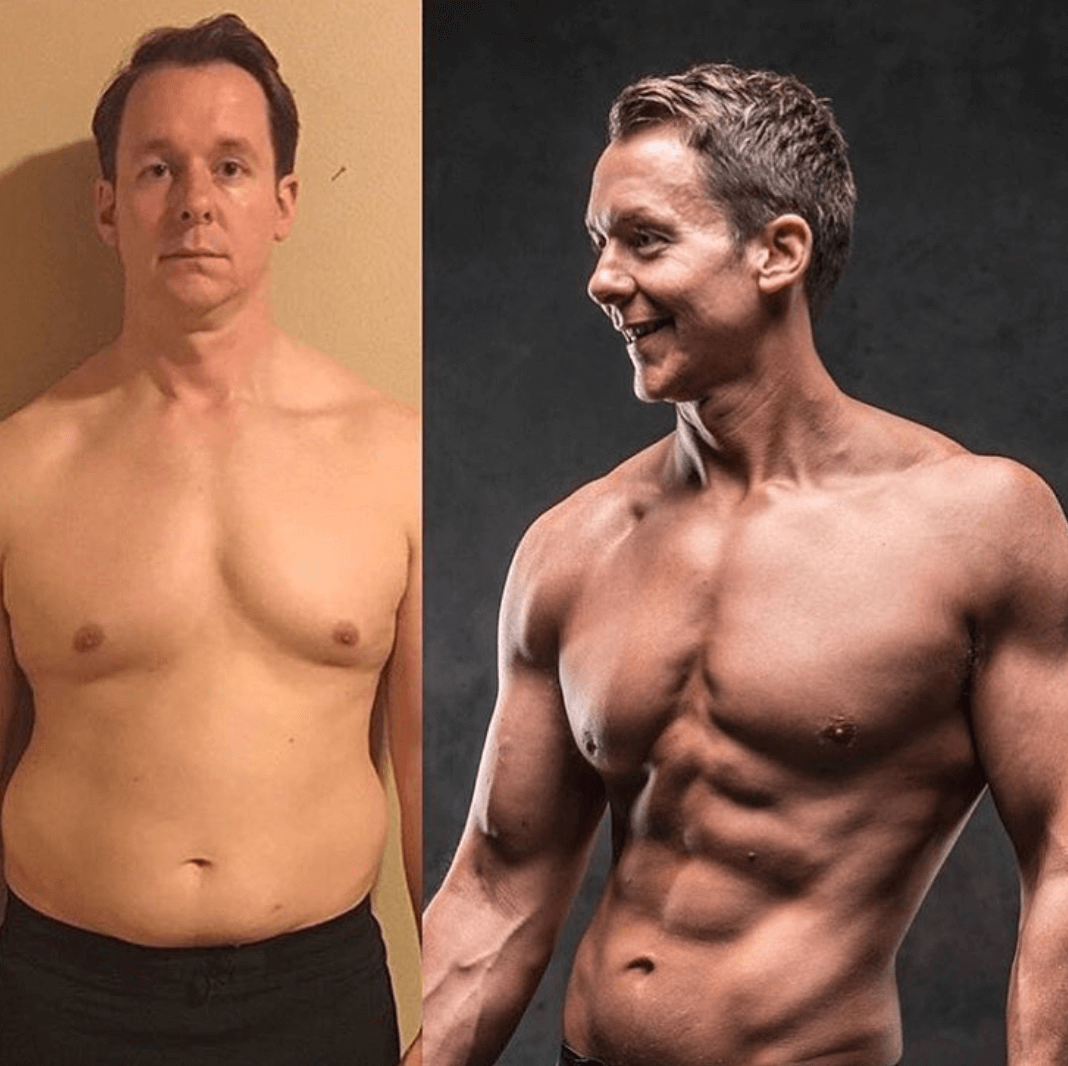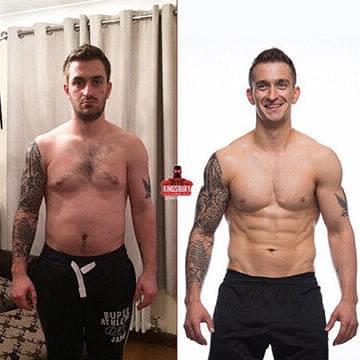If you want to get fit, lose fat or gain muscle, training intensity is potentially the most crucial factor in your training.
The intensity of your workouts need to be fit for purpose. It is determined by your goals – what you are trying to achieve.
What is “intensity””?
Your intensity during exercise is a measure of how much effort youÂ’re putting in compared to the maximum effort.
If you’re lifting weights, maximum intensity is the maximum weight you can lift in a given exercise, also known as 1 rep maximum or 1RM. If you can bench press 100kg, and you’re currently bench pressing 60kg, you’re at 60% intensity.
This means that the first thing you need to do is record the maximum weight you can lift just once (but be careful not to injure yourself).
Why does intensity matter?
Because the intensity of your workouts has a huge effect on the outcome.
A study in 2015 took a group of young men and put half of them on a high volume (4×10 rep) low intensity (70%) workout, and the other half on low volume (4x4rep) high intensity (90%). The high intensity group improved their 1 rep max by an average of 15% compared to 7% for the low intensity group [1].
This study is not alone. Time [2] and again [3] studies have shown that high intensity (over 70%) low volume workouts improve strength the quickest.
If your muscles get stronger but you don’t adjust your workout, your results will plateau. If you want to keep seeing improvement, you have to up the intensity. This is known as progression or progressive overload, and is essential if you want to keep getting fitter and stronger.
If high intensity is good, why not go all out at 100% intensity?
Sounds plausible, but itÂ’s not a great approach in practice for most people
- Firstly, always lifting your maximum can put a high strain on your body and massively increase the risk of injury, especially in inexperienced lifters.
- Secondly, by increasing the number of reps, your body recruits more muscle fibres in the exercise. This works out more muscle, allowing for greater strength and size gains.
And don’t forget to rest. It can be tempting to think that the harder a workout the more beneficial it must be. But studies have shown that taking a longer rest between sets, such as 3 minutes instead of 1 minute, actually leads to increased strength and muscle mass [4].
Why would you go for low intensity high volume workouts?
There are a few times when dropping the intensity is a good idea:
- If you just want to get big muscles: hypertrophy, or muscle growth, increases with a lower intensity higher volume programme. So if your only goal is to grow your muscles quickly, this is the option for you.
- If you want to improve muscle stamina: if you’re training for a sport such as rock climbing, pure strength is probably not your main concern, you just want to be able to hold on for as long as possible. Low intensity workouts targeting key muscles can improve stamina much more effectively that high intensity workouts.
- If you stop seeing results. Changing intensity can promote muscle growth if your body has become accustomed to your usual intensity range.
- If youÂ’re in recovery from injury
Also, while high intensity exercise might provide the best bang for your buck, it’s not without risk. High intensity workouts can increase the risk of injury if you overdo it.
So if you’re planning on increasing the intensity of your workouts, you need to be careful.  Proper technique, supervision and good coaching have all been shown to reduce the chance of injury [5]. If you’re new to weightlifting, or feel like you have room to improve, consider hiring a local fitness instructor to show you the correct form.
If you’re planning a workout using percentage of 1RM or 10 rep max, also make sure you’re being honest with yourself, and continue to adjust your maximum as you get stronger. A recent study asked 160 experienced weightlifters what their 10 rep maximum was, then asked them to lift that weight as many times as possible.  On average, they lifted it 15 times [6]. This meant that if they undertook a high intensity training programmes based on their 10 rep maximums, they would be lifting weights that were too low.
To conclude, intensity matters when lifting weights.
If you want to get strong, try lifting weights of around 80-90% of your 1RM for 3-5 reps, and make sure you take a rest between sets. But make sure you use correct technique and don’t push yourself too hard. If in doubt, get a fitness instructor or an experienced weightlifter to help you.
If you want to boost stamina, grow your muscle appearance or feel like you might be damaging yourself at high intensity, aim for a lower intensity.
And don’t get stuck in a rut. Your body has a brilliant ability to adapt to exercises, making it easy to hit a plateau. If this happens to you, try varying your exercises or intensity, forcing your body back into action.
What about cardio intensity?
If you’re doing cardio, maximum intensity is the point at which your body can only just supply oxygen to your muscles at the rate they need it. Any more effort and you will run out of energy and have to slow down. This is known as VO2max.
It’s hard to measure VO2max, so most athletes use heart rate instead. If your maximum heart rate is 200, and it’s currently beating at 150bpm, you’re at 75% intensity.
When doing cardio, a big difference between low and intensity workouts is calorie consumption. If you’re doing a full body workout, interval training or general cardio, the higher the intensity, the more calories you burn in the same amount of time, and the greater the amount of carbs you burn compared to fat [7].
If you’re working out in the 80-90% intensity range, your body will be getting energy from about 90% carbs, 10% fat. This is because carbs are a quick and easy source of energy.
If youÂ’re working out in the <70% range, your body will only be using about 20% carbs or less, with the rest of the energy from slow-burning fat.
So if your goal is to burn maximum calories in a short time, go for a high intensity workout.
But if you have the time, and if youÂ’re trying to burn off some excess fat, try longer low intensity steady state workouts, or LISS.
LISS has many advantages.
- After a LISS session you will feel less fatigued than after a high intensity workout.
- Exercising at low intensity is much more sustainable: you can keep going for much longer, so have the ability to burn more calories overall. This makes it much easier to create a calorie deficit.
- ItÂ’s easier to find the willpower to go for a low intensity jog or power walk.
- It should also be more enjoyable.
- Finally, the chance of injuring yourself is lower at low intensity [13].
If youÂ’re time short and very motivated, there is another technique you can utilise to lose fat and get fitter: high intensity interval training, or HIIT.
HIIT is popular, and justifiably so. Research has shown again [8] and again [9] (and again [10] and again [11]) that just 10 minutes of exercise a day, 3 times a week, can reduce body fat, improve aerobic capacity and increase insulin sensitivity.
The reasons for this are a bit technical, but the theory is that this kind of exercise gives your metabolism a boost that lasts well beyond the length of the workout.
To get the full benefits of HIIT, you need to exercise for around 10 bursts of about 30 seconds, with short rests in between. These bursts need to be incredibly high intensity, more than 95% of maximum heart rate.
This type of exercise is not for everyone. It should be almost painfully hard. As one study put it, you have to be highly motivated to tolerate the accompanying discomfiture [12].
This kind of high intensity exercise also carries with it a higher risk of injury. Warming up is an important but often overlooked part of HIIT.
It is also hard to maintain the required level of intensity. If your intensity drops under 90%, the aerobic benefits of HIIT drop considerably [13]. You will effectively just be doing a very short moderate intensity workout, which will give you little health or fitness advantage.
However, if you are careful to warm up correctly, have the motivation and are willing to suffer the discomfort, HIIT is a great way to burn fat, especially if you find yourself lacking in time.
Regardless of your preferred intensity level, if your goal is to lose fat, you must pair your workout with a calorie deficit. Just doing a bit of exercise, even a few hours a week, will likely have negligible effect on your weight [14].
In fact, a study carried out in 2012 showed that most people lose very little weight if any when they increase their exercise, partly because exercise makes people lazier the rest of the time and also because exercise makes you hungry [15].
If you want to lose weight, you must be in a calorie deficit.
Weight loss can be achieved without any exercise at all.
But if you’re after an improvement in body composition and want to get fitter and healthier, exercise plays an important role. If you are in a calorie deficit and want to lose fat but not muscle, resistance training will improve muscle retention and promote fat loss [16].
To conclude, the intensity of your cardio workouts should be determined by your goals, your motivation and how much time you have.
If youÂ’ve got lots of free time, donÂ’t enjoy very intense exercise and are trying to maximise fat loss, long, low intensity workouts are a great way to increase calorie consumption, drop fat, improve fitness, reduce the chance of injury and enjoy yourself.
But if you lack free time and are highly motivated, high intensity interval training, when combined with an adequate warm up, is a fantastic tool for getting fitter and improving body composition in a very short amount of time.
It is also really important to be consistent. Find what works for you, and don’t push yourself. There’s no point going flat out then not having the energy or enthusiasm to keep it up. Pushing yourself too hard will also make it more likely you will get injured.
Find a balance between intensity and consistency which works for you, and you will achieve your health and fitness goals.










